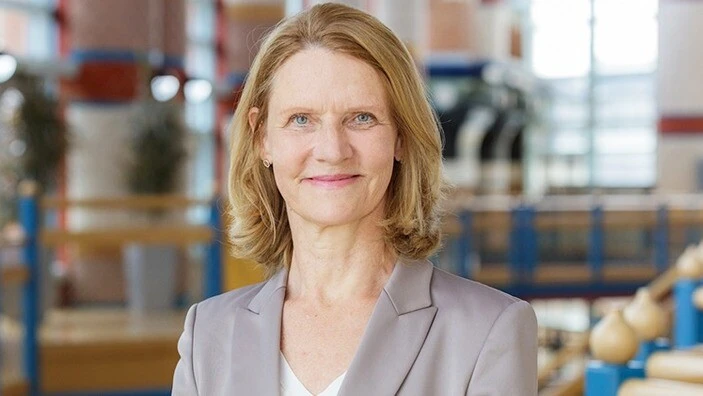As the world urbanises at an unprecedented pace, cities have become both the culprits and casualties of climate change. They are hubs of innovation and opportunity, yet they also consume vast amounts of energy, emit significant greenhouse gases and are vulnerable to environmental disruption including flooding. Research by Professor Lucia Reisch of Cambridge Judge Business School draws on behavioural science and visionary urban design to provide a compelling framework for how initiatives in a city can become an engine of sustainable transformation that serves as a model for other cities around the globe.
Creating cities by and for everybody
In her watershed 1961 book ‘The Death and Life of Great American Cities’, the influential urban planner and author Jane Jacobs wrote: “Cities have the capability of providing something for everybody, only because, and only when, they are created by everybody.”
The focus by Jane Jacobs on everybody was deliberate and pivotal and pointed, as she waged battle over the bulldozing of homes and neighbourhoods in what was euphemistically billed in the post-World War II US as slum clearance. In his Pulitzer Prize-winning 1974 biography of New York City development czar Robert Moses, ‘The Power Broker’, author Robert Caro notes that the great roads of antiquity such as the Silk Roads and the Royal Road of Persia were built across open countryside. Jump forward thousands of years, and the Cross-Bronx Expressway in New York championed by Moses was “like no other road in history, for it was built through a city” – thus “disembowelling a dozen communities along the route”. The Expressway built by Moses may have sped motorists’ journeys but hardly benefitted everybody.
So in serving everybody, how should cities be organised and managed for the sustainability of the planet, the public health of residents and the needs of multiple users with different and perhaps conflicting needs and wants?
Local climate action starts with people: cities as agents of change

Research, co-authored by Lucia Reisch, El-Erian Professor of Behavioural Economics and Policy at Cambridge Judge, addresses this issue by providing a blueprint that recognises urban areas as both major contributors to climate change and critical sites for implementing solutions. In contrast to top-down megaprojects, such as Robert Moses’ city-dissecting highway, the sentiment of Lucia’s research is in line with Jane Jacobs’s emphasis on inclusive, ground-level participation in city-making.
While more than half the world’s population (and growing) live in cities, there has been a “notable absence of robust models” for extrapolating solutions from one city for application in other cities, says the research published in the leading journal Nature, because climate action has been largely designed and coordinated at the global or national level.
“However, the discourse increasingly points towards the downscaling of climate action, with the local level and its actors as crucial points of intervention. Action will affect everyone, and everyone will need to contribute to it: climate action is by and for people.”
The GISE framework: goals, interventions, stakeholders and enablers
The study proposes a framework for integrated urban policies to address sustainability issues in a way that can be adjusted for local conditions in cities around the world. Specifically, the authors propose a Goals-Interventions-Stakeholders-Enablers (GISE) framework that looks at:
- goals that are sought to achieve
- interventions such as public transport and green spaces
- stakeholders to serve including citizens, businesses and governments
- enablers including governmental structures and data to help make it happen
The GISE framework is designed to help develop public policy that is “both place-specific and provides insights and tools useful for climate action in cities and other human settlements worldwide”, says the research.
The study uses Berlin as a case study, including efforts there to increase the proportion of more climate-friendly heat pumps for residential heating, to enlarge green spaces and to shift from low-occupancy private cars to mass transit or cycling.
“We chose Berlin because of its diversity of livelihoods and neighbourhoods – and for a practical design intervention to be meaningful, feasible and relevant, it has the right size. Last but not least, some of us lived or currently live in Berlin, so there is a lot of first-hand experience and insights into city planning,” says Lucia.
Flexible urban policy: bridging silos with shared knowledge
In academic terms, the paper takes a ‘boundary object’ approach to urban public policy in the 21st century, referring to a concept that can bridge gaps between social worlds and communities of practice. Such boundary objects are designed to be flexible enough to be interpreted differently in various communities without requiring consensus on every detail, but still “possess enough immutable content to maintain integrity”, say the authors, who propose 4 types of urban planning knowledge that can serve as such boundary objects.
1
Orientation knowledge
Orientation knowledge to delineate shared objectives such as carbon neutrality and enhanced urban liveability.
2
Systems knowledge
Systems knowledge including data and models on urban energy flows and heat island effects to enable collaboration between engineers, ecologists and policymakers.
3
Transformation knowledge
Transformation knowledge, including case studies and best practice for climate mitigation and adaptation in urban settings.
3
Process knowledge
Process knowledge including frameworks for participatory planning and other mechanisms to facilitate interdisciplinary teams collaborating effectively.
Using behavioural science to make city dwellers’ choices more climate-friendly
A related study by Lucia argues for integrating behavioural sciences and urban planning in order to make people’s choices more climate-friendly and unlock new pathways for higher liveability of cities. “A critical yet often overlooked aspect of choice architecture is urban form – the physical layout and design of cities – which significantly influences mobility behaviours, energy consumption in buildings and even food choices,” says the paper in the journal Communication Psychology, which is also part of the Nature group of publications.
While urban and transport planning have traditionally been grounded in engineering principles, behavioural insights have not been extensively incorporated. “This gap represents a missed opportunity for synergising knowledge to create choice environments that naturally encourage low-carbon behaviours across consumption domains such as mobility, living and food,” says the study.
The 6 Ds vs the 4 As: rethinking sustainable urban mobility
For example, city transport policies have often focused on the ‘6 Ds’:
- population density
- diversity of land use
- design of the street network
- distance to transit
- destination accessibility
- demand management
But Lucia argues that such an approach alone fails to reflect the ‘4 As’ that make the most sustainable choice the most:
- affordable
- available
- accessible
- attractive
“Without a behaviourally informed view, even well-designed urban spaces and transport systems may not achieve their full potential for promoting low-carbon mobility if they do not resonate with the psychological and social realities of the people who use them,” says the research.
Human-centric cities: what we can learn from Copenhagen, Bogotá and Melbourne
There are some striking examples of cities that have been transformed for more liveability, influenced through the work of Danish architect and urban designer Jan Gehl. He is known for advocating incremental improvements that are documented and then improved upon again, and re-documented, to build convincing evidence for investment in humanistic urban environments. Cities such as Copenhagen, Bogotá and Melbourne have incorporated such design thinking.
In Copenhagen, bike lanes are designed with attention to details that matter to cyclists – such as direct routes that make cycling the fastest mode of transport, physical separation from car traffic for safety and ‘green waves’ that minimise cycle stopping at red lights. Bogotá’s Ciclovía programme closes streets to motor traffic on Sundays, encouraging people to exercise and socialise in safe spaces while fostering a sense of community. And in Melbourne, where Gehl was a visiting professor in the 1970s, roads were transformed into ‘laneways’ filled with art, cafes and greenery, based on the understanding that environments can shape social interactions and encourage more pedestrian activity.
Interviewed by a design-focused publication on a return visit to Melbourne in 2013, Gehl said he drew on the inspiration of Jane Jacobs, who died in 2006: “50 years ago she said – go out there and see what works and what doesn’t work, and learn from reality. Look out of your windows, spend time in the streets and squares and see how people actually use spaces, learn from that and use it.”
Yet despite successes by local officials in Melbourne and elsewhere, the research by Lucia notes that many mayors and city administrators are hindered in sustainability efforts by several factors including risk aversion leading to slow decision processes, and the need to balance conflicting interests such as creating new affordable housing while reducing emissions in the construction sector. In addition, cities face financial constraints such as the steep cuts in local authority budgets in the UK under fiscal austerity measures imposed by the UK government following the 2007-2008 financial crisis.
The Cambridge ecosystem and sustainable cities
Beyond Lucia’s behavioural lens, other Cambridge Judge scholars are contributing to the urban sustainability conversation.
A report co-authored by Kamiar Mohaddes, Associate Professor in Economics and Policy, in conjunction with Boston Consulting Group, outlined the compelling cast for investing in climate change mitigation and adaptation to prevent far greater losses in economic activity. A project outlined in the report in a West African coastal city facing severe climate risk (flooding, higher average temperature and rising sea levels) found potential GDP losses of 17% by 2050 due to damaged transportation and power grid infrastructure, along with disruption to health centres and billions of dollars in relocation costs. Like Lucia’s Nature study, the research by Kamiar identifies the importance of local conditions in improving decision-making on sustainability matters.
At the Centre for Risk Studies at Cambridge Judge, the vulnerability of cities to climate change features in several studies that use the metric of GDP@Risk developed at the Centre. The first-place paper in the 2024 Cambridge-McKinsey Risk Prize, announced at the Centre’s annual Risk Summit, focuses on ‘What does it mean for a city to fail?’ Based on a case study of China, the paper “draws lessons from the past with the aim of laying a foundation to inform future planning and policymaking in sustainable urban development” including transport and other infrastructure.
Beyond Cambridge, the effect of climate change on cities is also recognised by the Intergovernmental Panel on Climate Change, which is preparing a Special Report on Climate Change and Cities. An outline of the report adopted last year highlights the important role of behaviour in framing effective policies, saying policymaking needs to take into account the role of “psychology, perception, behaviour and attitudes toward climate change and cities”. The final report is due in 2027.
Climate change is a wicked problem – shared knowledge is essential in solving it
The future of sustainable urbanism does not lie in one-size-fits-all solutions or purely technical fixes. Instead, it requires a collaborative reimagining of cities as living, adaptive spaces shaped by those who inhabit them. The research led by Lucia provides a multi-dimensional approach – integrating behavioural insights, participatory governance and practical urban planning – to help guide cities toward a more sustainable, inclusive future.
The complexity of making decisions on environmental issues has long been a focus of scholars. In a 1940 journal article on ‘Sewerage in ancient and mediaeval times’, author-engineer Harold Farnsworth Gray scoffs at people referring to modern sanitation “as if were something rather recently developed”. Rather, he says, modern people should realise that “in the light of history it is a matter of astonishment, if not chagrin, that man in this respect has progressed so very little, if at all, in some 4,000 years.”
An influential 1974 paper led by Robert Socolow of Princeton University, ‘Failures of Discourse’, on the case study of the proposed Tocks Island Dam in New Jersey, highlights the importance of various perspectives in developing a comprehensive picture of what sustainability means. In the decades since, many studies have focused on the need for transdisciplinary research to solve the world’s wicked problems such as climate change, healthcare and inequality.
So let’s end with the words of Socolow, who while he opposed the controversial dam (the dam was never built, but the US government displaced thousands of families by acquiring properties through eminent domain), he felt that discussion on such environmental matters was of critical importance. Such discussion is reflected in the 4 types of shared urban planning knowledge identified in Lucia’s research in Nature.
“Improvements in discourse can be better justified in terms of higher ends than the instrumental one of ‘solving’ the problem at hand,” Socolow wrote. “The new discourse would manifest a fuller expression of the diversity of preferences and emotional commitments of the participants. It would enhance the sensitivities of both participants and bystanders to the complex, tragi-comic process of self-definition which a culture goes through when it seeks to resolve any of its hard problems. It seems worth pursuing for its own sake.”
Applying such principles to city planning, such discourse may not, as Jane Jacobs hoped, provide something for everybody, but it does help her goal of cities being created by everybody.
Featured research
Creutzig, F., Becker, S., Berrill, P., Reisch, L.A. et al (2024) “Towards a public policy of cities and human settlements in the 21st century.” npj Urban Sustainability
Creutzig, F. and Reisch, L.A. (2024) “A joint research agenda for climate action bridges behavioral sciences and urban planning.” Communications Psychology
Benayad, A., Hagenauer, A., Holm, L., Jones, E.R., Kämmerer, S., Maher, H., Mohaddes, K., Santamarta, S. and Zawadzki, A. (2025) Landing the economic case for climate action with decision makers. Boston Consulting Group, Cambridge Judge Business School and The climaTRACES Lab.
Wang, E.T. (2024) “What makes a city to fail?” Cambridge-McKinsey Risk Prize Paper, Cambridge Judge Business School
Ehwi, R.J. (2023) “Shaping smart cities: problem framing, vertical selection and decision-making logics in seven UK cities.” Urban Geography
Gray, H.F. (1940) “Sewerage in ancient and mediaeval times.” Sewage Works Journal
Socolow, R.H. (1976) “Failures of discourse.” Daedalus





